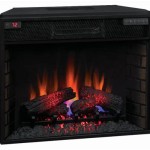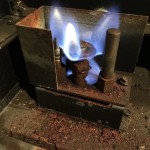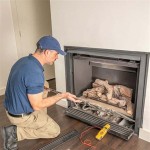Fireplace Coal Bucket With Lid: A Comprehensive Guide
A fireplace coal bucket with a lid is an indispensable accessory for individuals who rely on coal as a primary fuel source for heating their homes and creating a cozy ambiance. It serves as both a functional storage solution and a safety measure, ensuring the convenient and secure handling of coal. This article provides a detailed examination of coal buckets with lids, covering their essential features, materials, benefits, factors influencing selection, and maintenance practices.
Functionality and Purpose
The primary function of a coal bucket with a lid is to provide a dedicated and contained storage space for coal near a fireplace or stove. It allows for easy access to the fuel, eliminating the need to repeatedly venture outside to replenish the coal supply. The lid plays a crucial role in containing dust, debris, and odors emanating from the coal, contributing to a cleaner and more pleasant indoor environment. Furthermore, the lid significantly reduces the risk of accidental spills and helps to prevent the coal from absorbing moisture, which can negatively impact its burning efficiency.
Beyond storage, a coal bucket facilitates the safe transportation of coal from larger storage areas to the immediate vicinity of the fireplace. The sturdy construction and often integrated handles enable users to carry a substantial amount of coal in a controlled and manageable manner. The presence of a lid during transport minimizes the potential for coal dust and fragments to scatter, maintaining cleanliness and preventing tripping hazards.
In essence, the coal bucket streamlines the process of using coal for heating, making it more convenient, safer, and cleaner. Its design addresses the inherent challenges associated with handling and storing this fuel source within a residential setting.
Materials and Construction
Coal buckets with lids are typically constructed from durable materials that can withstand the weight and abrasive nature of coal. The most common materials include:
*Steel:
Steel is a popular choice due to its strength, durability, and affordability. Steel coal buckets often feature a powder-coated finish to resist rust and corrosion, ensuring a longer lifespan. The thickness of the steel gauge contributes to the overall robustness of the bucket. *Galvanized Steel:
Galvanized steel offers enhanced corrosion resistance compared to standard steel. The galvanization process involves coating the steel with a layer of zinc, providing a protective barrier against moisture and other environmental elements. This makes galvanized steel coal buckets particularly suitable for environments with higher humidity or where the bucket may be exposed to occasional moisture. *Cast Iron:
Cast iron coal buckets are known for their exceptional durability and classic aesthetic appeal. Cast iron is highly resistant to deformation and can withstand significant weight without buckling. However, cast iron buckets tend to be heavier than those made from steel or galvanized steel, which may affect their portability. *Copper:
Copper coal buckets offer a distinctive and elegant look. Copper is naturally resistant to corrosion and boasts excellent thermal conductivity. However, copper buckets are generally more expensive than those made from other materials and may require periodic polishing to maintain their shine.The construction of a coal bucket typically involves a seamless or welded body to prevent leaks and ensure structural integrity. The lid is usually designed to fit snugly on the bucket, creating a secure seal. Handles are generally attached securely with rivets or welds to provide a comfortable and reliable grip. Some coal buckets may also feature a reinforced base for added stability.
Benefits of Using a Coal Bucket With Lid
Employing a coal bucket with a lid offers a multitude of benefits that extend beyond simple storage:
*Enhanced Safety:
The lid is paramount in preventing accidental spills and reducing the risk of coal dust inhalation. It also acts as a barrier to prevent embers from escaping, thereby mitigating the potential for fire hazards, particularly in households with children or pets. *Improved Cleanliness:
Coal can be a messy fuel, producing dust and debris that can easily spread throughout the home. The lid effectively contains these particles, minimizing the need for frequent cleaning and maintaining a more hygienic living environment. *Moisture Control:
Coal that absorbs moisture becomes less efficient when burned, producing more smoke and less heat. The lid protects the coal from rain, snow, and humidity, ensuring that it remains dry and ready for optimal combustion. *Odor Control:
Coal can emit a distinctive odor that some individuals find unpleasant. The lid helps to contain these odors, reducing their intensity and preventing them from permeating the surrounding air. *Aesthetic Appeal:
Beyond their functional benefits, coal buckets can also enhance the aesthetic appeal of a fireplace area. Many models are available in a variety of styles and finishes, allowing homeowners to choose a bucket that complements their décor and adds a touch of rustic charm. *Pest Prevention:
An open pile of coal can attract unwanted pests. A lidded coal bucket provides a barrier, preventing rodents and insects from accessing the coal and potentially infesting the home.Factors to Consider When Choosing a Coal Bucket
Selecting the appropriate coal bucket with a lid is crucial to ensure it meets specific needs and preferences. Several factors warrant careful consideration:
*Capacity:
The required capacity of the coal bucket depends on the frequency of fireplace use and the amount of coal typically consumed. Smaller buckets are suitable for occasional use, while larger buckets are better suited for individuals who rely on coal as a primary heating source. *Material:
The choice of material depends on factors such as budget, desired durability, and aesthetic preferences. Steel and galvanized steel offer a good balance of affordability and durability, while cast iron provides exceptional robustness and a classic look. Copper provides aesthetic appeal but is more expensive. *Lid Design:
The lid should fit securely on the bucket and be easy to open and close. A hinged lid with a comfortable handle is often the most convenient option. Some lids may also feature a latch or locking mechanism for added security. *Handle Design:
The handles should be sturdy and comfortable to grip, even when the bucket is full of coal. Ergonomic handles that are shaped to fit the hand reduce strain and improve maneuverability. *Stability:
A stable base is essential to prevent the bucket from tipping over, especially when it is full. A wide base and a low center of gravity contribute to overall stability. Some buckets may also feature rubber feet to prevent slipping and protect flooring. *Aesthetic:
The style and finish of the coal bucket should complement the décor of the fireplace area. A wide range of styles are available, from traditional to contemporary, allowing homeowners to choose a bucket that suits their personal taste. *Budget:
Coal buckets range in price from relatively inexpensive to quite expensive, depending on the material, size, and features. It is important to set a budget before shopping and to compare prices from different retailers.Maintenance and Care
Proper maintenance and care can significantly extend the lifespan of a coal bucket and ensure its continued functionality. Regular cleaning is essential to remove coal dust and debris. The bucket can be cleaned with a damp cloth and mild detergent. Avoid using abrasive cleaners, as they can damage the finish. If the bucket is made of steel, applying a coat of wax can help to prevent rust. If the bucket is made of copper, it may require periodic polishing to maintain its shine.
Inspect the bucket regularly for signs of damage, such as dents, cracks, or rust. Repair any damage promptly to prevent further deterioration. Check the lid to ensure that it fits securely and that the hinges or latches are in good working order. Lubricate the hinges or latches as needed to ensure smooth operation.
Store the coal bucket in a dry and well-ventilated area when it is not in use. This will help to prevent rust and corrosion. Avoid storing the bucket in direct sunlight, as this can cause the finish to fade. Do not overload the bucket with coal, as this can put stress on the handles and the body of the bucket. Adhering to these maintenance practices will ensure the long-term reliability and aesthetics of the coal bucket.

New 12l Metal Ash Bucket With Lid Wooden Handle Fireplace Container Litre Coal Diy At B Q

Amagabeli Ash Bucket With Lid Outdoor And Indoor Coal For Fireplace Small

Amagabeli Ash Bucket With Lid Outdoor And Indoor Coal For Fireplace Small

Amagabeli Ash Bucket With Lid Outdoor And Indoor Coal For Fireplace Medium Fire Metal Can Broe Model Number Com

Traditional Antique Brass Fireplace Coal Bucket With Shovel Diy At B Q

Homgarden 5 15gal Large Ash Bucket W Lid Shovel Coal Pail For Fireplace Wood Burning Black Com

Black Coal Bucket And Shovel Dibor

12l Metal Ash Bucket With Lid Wooden Handle Fireplace Container Litre Coal Storage

Antique Style Silver Fireplace Coal Log Storage Bucket And Shovel Diy At B Q

Dickens Coal Bucket With Shovel Dibor
Related Posts








